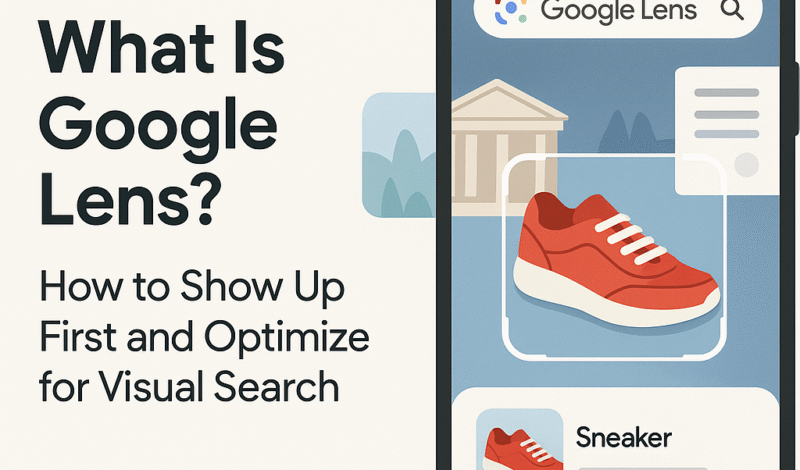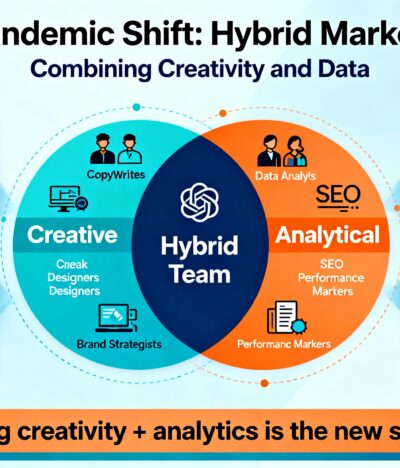Search is no longer limited to words. With tools like Google Lens, people can search the web simply by pointing their phone’s camera at an object. Whether it’s a landmark, a pair of sneakers, or a restaurant menu, Google Lens can identify it and return relevant results instantly. The future of search is visual—and if your brand isn’t prepared, you risk disappearing from the conversation entirely. So how do you make sure your content is the first thing users see when they point and tap? In this blog, we’ll break down what Google Lens is, how it works, and most importantly, how you can optimize your business or website to show up first.
What Is Google Lens?
Google Lens is a visual search tool developed by Google that uses image recognition powered by AI to understand the content of pictures. Users can take a photo or use their camera live, and Google will return information, suggestions, and links relevant to what’s on the screen.
Some common use cases:
– Identifying products and finding where to buy them online.
– Translating foreign text on signs or menus.
– Recognizing landmarks, animals, or plants.
– Pulling contact info from business cards.
– Comparing food dishes from menus with ratings and reviews.
With over 1 billion downloads on Android and deep integration into the Google ecosystem, Google Lens is no longer a novelty it’s a mainstream search behavior.
1. Why Visual Search Matters for SEO
When users conduct a visual search, they’re often closer to the point of action. Someone snapping a photo of a sneaker wants to buy it. A tourist using Lens on a café wants to know if it’s worth visiting. This intent rich behavior makes it incredibly valuable for businesses. However, visual search also presents a challenge: traditional SEO alone won’t get you to the top. You need to optimize for image recognition, structured data, and contextual relevance to ensure your content is surfaced by Google Lens.
How to Show Up first on google Lens
1. Optimize Your Images
Google Lens relies heavily on images and the quality and content of your photos play a crucial role.
– Use High-Quality Images: Clear, well-lit photos with minimal clutter are more easily recognized by Lens.
– Use Descriptive File Names: Rename files from IMG_1234.jpg to red-nike-running-shoes.jpg.
– Add Alt Text: Alt attributes help Google understand what the image is and improve accessibility.
2. Leverage Structured Data
Structured data (schema markup) helps search engines understand the context of your content.
– For products, use the Product schema to include price, availability, reviews, and brand.
– For local businesses, use Local Business schema to tag address, hours, phone number, and services.
– Make sure your structured data is clean and validated using [Google’s Rich Results Test](https://search.google.com/test/rich-results).
3. Claim and Optimize Your Google Business Profile
Google Lens often pulls data from Google Maps and business listings.
– Make sure your Google Business Profile is up to date with correct name, address, phone number (NAP), business categories, and photos.
– Add menu items, services, and products where applicable.
– Encourage customers to leave reviews and upload their own images—user-generated content helps Lens match photos to your business more accurately.
4. Make Your Website Visual Search-Friendly
Ensure that your site supports image indexing and quick loading.
– Submit an image sitemap in Google Search Console.
– Optimize for mobile—since most visual searches happen on mobile devices, your site needs to be lightning fast and mobile-friendly.
5. Think Like a Lens User
What would someone point their phone at to find you?
– If you’re a restaurant, it might be your sign, your storefront, or a specific dish.
– If you’re in retail, it might be the packaging, logo, or in-store displays.
Create content and assets that align with these real-world visuals. Brand consistency helps too—consistent logos, colors, and design language improve recognition.
Visual Search Is the Next SEO Frontier
Just like voice search reshaped how we write content (think question-based queries), visual search is reshaping how we think about discoverability. It’s no longer just about keywords—it’s about what your audience sees, snaps, and scans.
Brands that invest now in visual optimization will gain a serious advantage. Showing up first in Google Lens means more clicks, more conversions, and more relevance in a visually driven digital world.
Final Thoughts
Google Lens is changing the way people interact with the world—and the web. As this technology becomes more intuitive and widespread, the businesses that adapt their SEO strategies to include visual search will stand out first and foremost.
Start by optimizing your images, adding structured data, and thinking from a user’s lens-first perspective.



